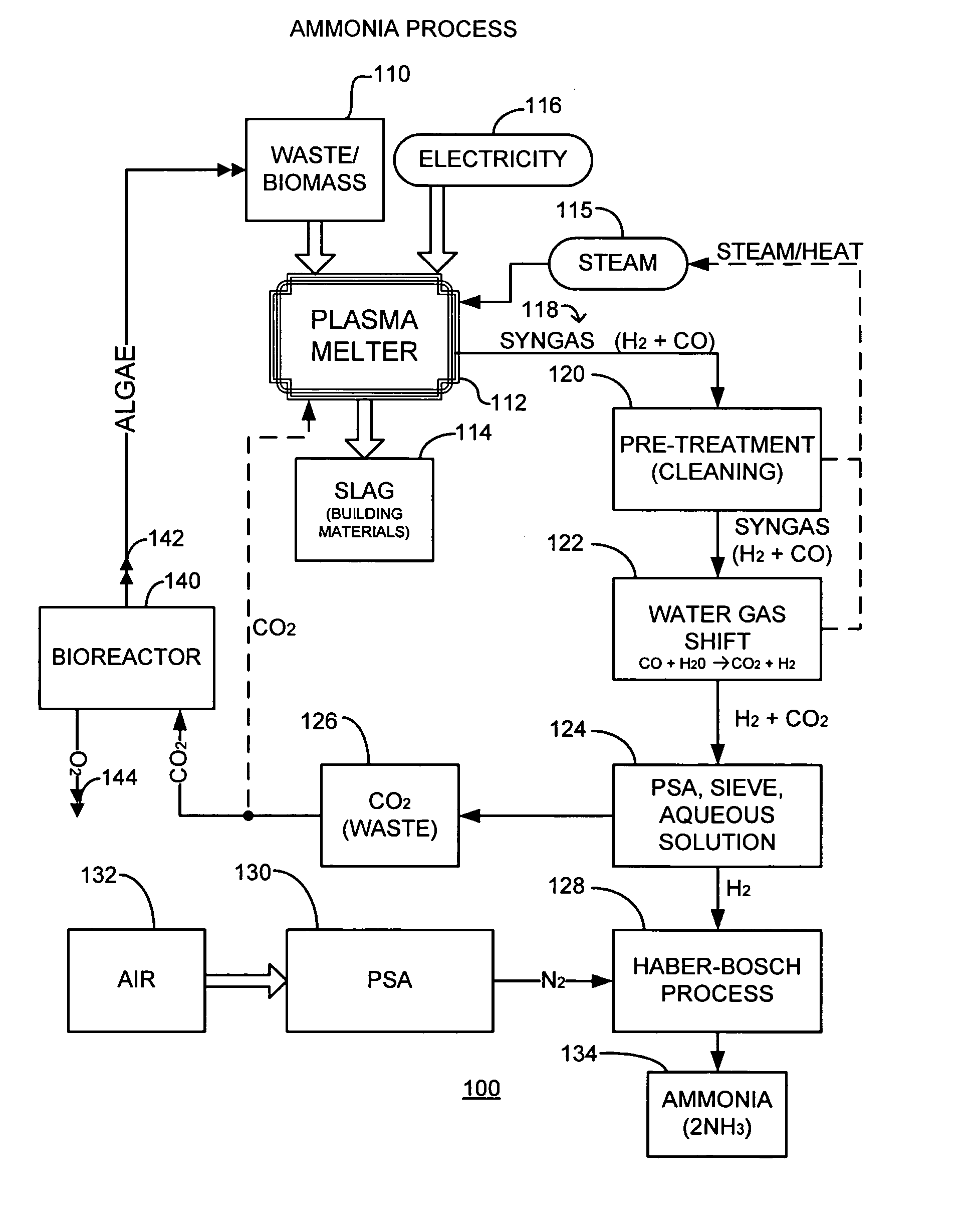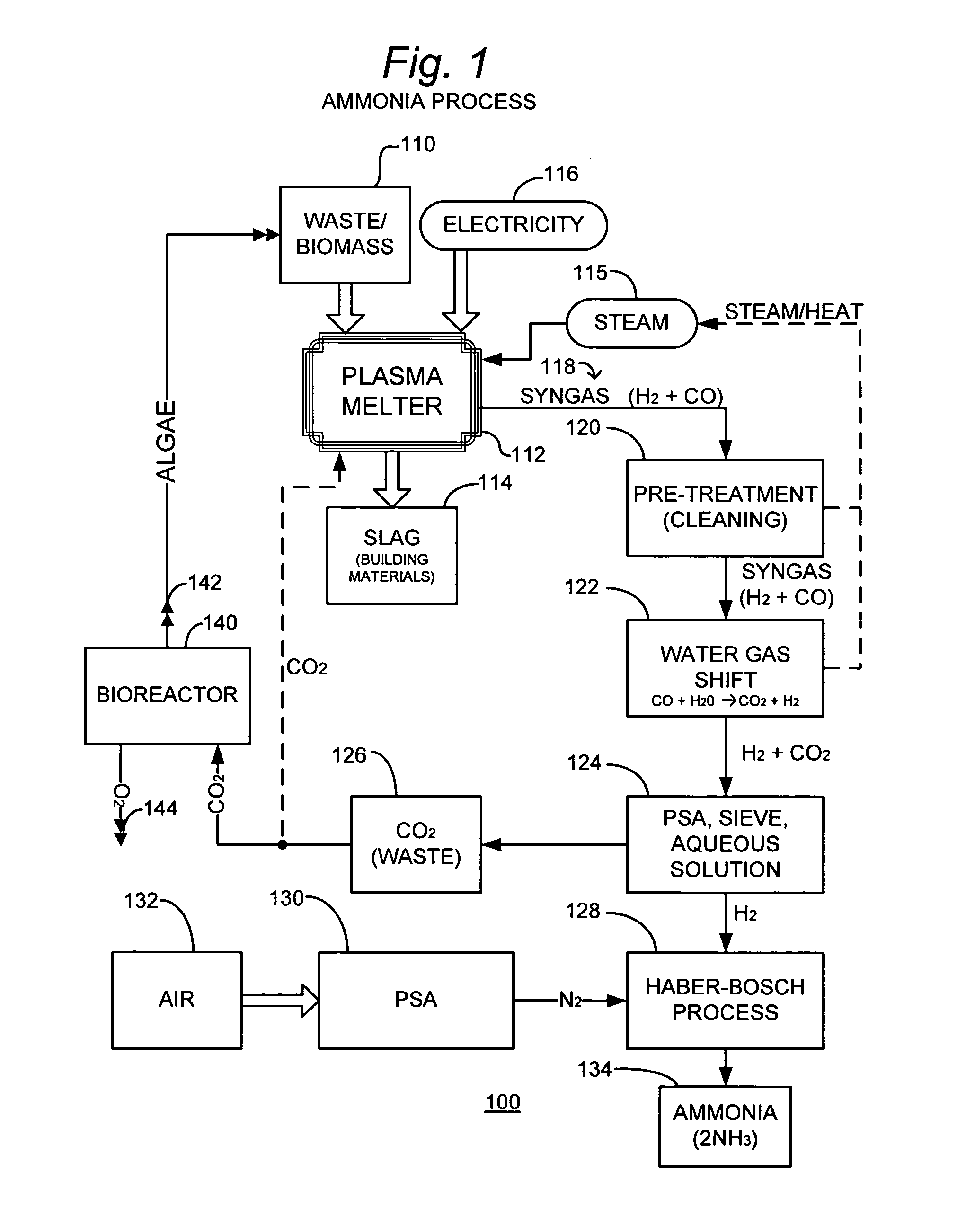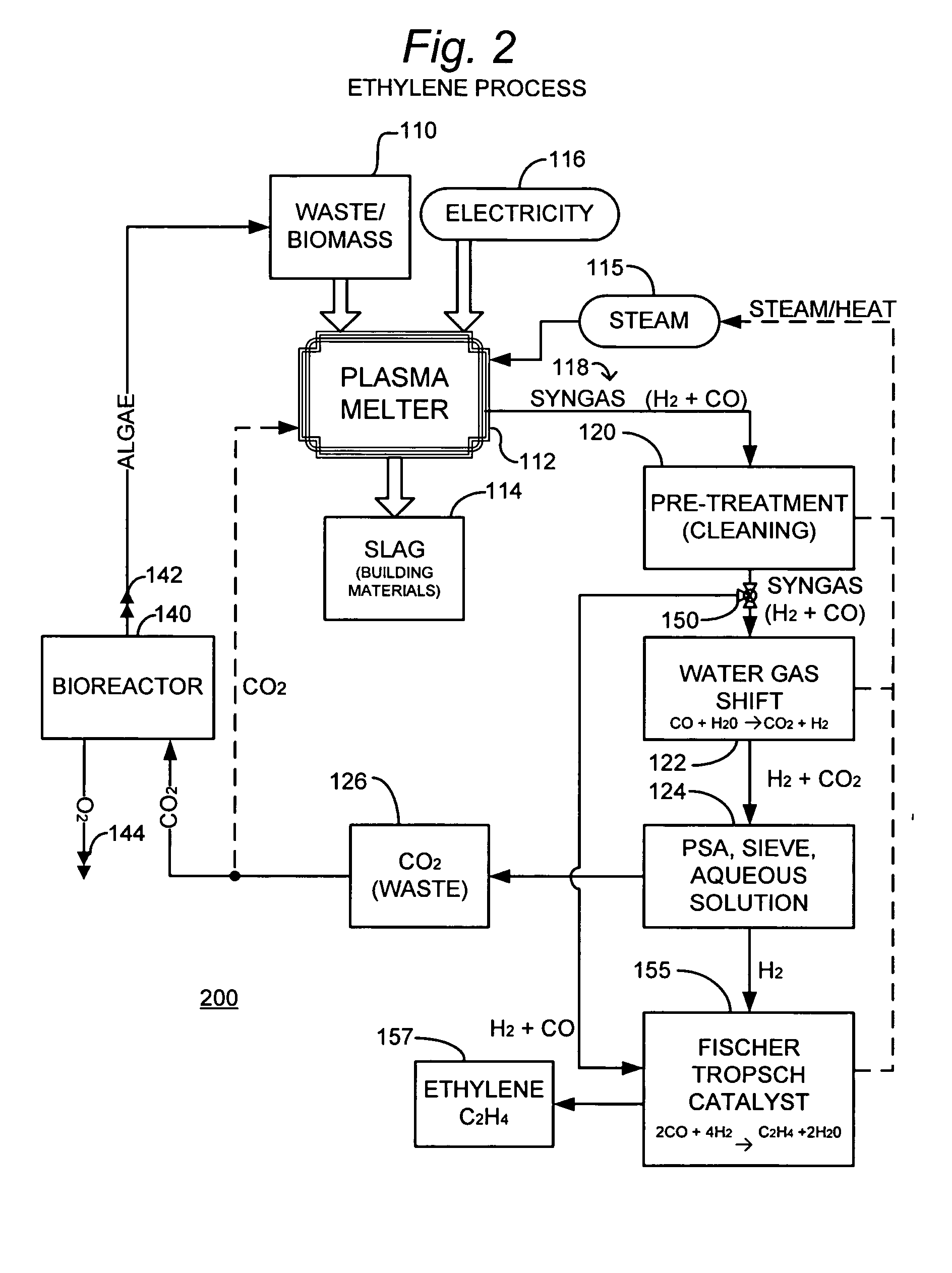Low co2 emissions systems
a co2 emission and low energy technology, applied in the direction of waste based fuel, machines/engines, combustible gas catalytic treatment, etc., can solve the problems of excessive harmful emissions, inability to store electrical power, and inefficient modern power plants to efficiently enable the throttling back of electrical power production, etc., to enhance algae growth
- Summary
- Abstract
- Description
- Claims
- Application Information
AI Technical Summary
Benefits of technology
Problems solved by technology
Method used
Image
Examples
Embodiment Construction
[0076]FIG. 1 is a simplified schematic representation of an embodiment of the invention wherein ammonia product is produced along with algae for use as a fuel. As shown in this figure, an ammonia producing system 100 receives municipal waste, or specifically grown biomass 110 that is deposited into a plasma melter 112. In the practice of some embodiments of the invention, the process is operated in a pyrolysis mode (i.e., lacking oxygen). Steam 115 is delivered to plasma melter 112 to facilitate production of hydrogen and plasma. Also, electrical power 116 is delivered to plasma melter 112. A hydrogen rich syngas 118 is produced at an output (not specifically designated) of plasma melter 112, as is a slag 114 that is subsequently removed.
[0077]In some applications of the invention, slag 114 is sold as building materials, and may take the form of mineral wool, reclaimed metals, and silicates, such as building materials. In some embodiments of the invention, the BTU content, plasma pr...
PUM
| Property | Measurement | Unit |
|---|---|---|
| molar ratio | aaaaa | aaaaa |
| electrical energy | aaaaa | aaaaa |
| pressure | aaaaa | aaaaa |
Abstract
Description
Claims
Application Information
 Login to View More
Login to View More - R&D
- Intellectual Property
- Life Sciences
- Materials
- Tech Scout
- Unparalleled Data Quality
- Higher Quality Content
- 60% Fewer Hallucinations
Browse by: Latest US Patents, China's latest patents, Technical Efficacy Thesaurus, Application Domain, Technology Topic, Popular Technical Reports.
© 2025 PatSnap. All rights reserved.Legal|Privacy policy|Modern Slavery Act Transparency Statement|Sitemap|About US| Contact US: help@patsnap.com



